Delicious palaces, private troops and dreams of supreme power - the Polish aristocracy was a real power. She could do more than the king alone. Our magnates fed their horses in marble mangers, and watered the nobles from the neighborhood at tables set with gold. What else could they afford?
According to Forbes, Jan Kulczyk (1950–2015) left a fortune worth at least fourteen billion zlotys. The richest Pole invested in energy, extraction of raw materials, transport, telecommunications, beer production, real estate ...
But where to go to the former magnates! Although they earned mainly from trading grain and cattle, investing only sporadically in more "developmental" industries, contemporary Polish fortunes pale in comparison to their wealth.
The arch-wealth of the Ostrogski family
At the beginning of the 17th century, Vasyl Konstanty Ostrogski owned 1,300 villages, 100 towns and castles. He owned about a million hectares of land and thousands of serfs . The Ostrog ordination established after his death was a family estate with its own statute, a hereditary company, one of the finest in the Republic of Poland, next to the Zamojski and Radziwiłł estates.
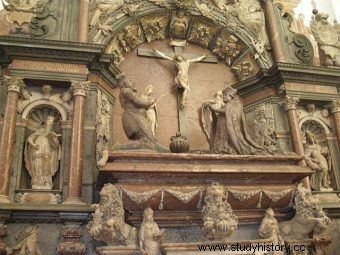
The Ostrogski Monument dedicated to Janusz and his first wife, Zuzanna. The work is made of black and red marble and yellow alabaster (photo:Christophoros43, license CC BY-SA 4.0).
Janusz Ostrogski, dying in 1620, left behind a decline in value close to the two-year state budgets! Including well over a million Polish zlotys in coins and thirty barrels of silver. And it was at a time when a hussar received a pay of 160-320 Polish zlotys, and a hussar captain from 2,000 to 10,000 Polish zlotys a year.
No wonder that magnate courts were full of "clients" who counted on the help of a powerful neighbor or at least a drink at his expense (in return supporting his "party" at sejmiks and parliaments). They were the audience for the noble saints, their ideas and extravagance.
Let us add that an expensive audience, because a single farm brought the owner no more than 1,500 Polish zlotys of income, while maintaining the manor house cost about 50,000! But magnates could afford luxuries that the richest Poles today never dreamed of ...
Luxuries for selected Janów
For his sixtieth birthday, Jan Kulczyk bought himself a 100-meter yacht, worth over PLN 400 million. With a swimming pool, gym, cinema room, spa and several dozen staff. He went on business trips with his own Gulfstream IV-SP plane, the cost of which was approximately PLN 150 million. He traveled on the roads in a luxurious Audi A8 limousine, worth several hundred thousand zlotys.
Although the means of transport have changed over the centuries, their role as symbolic attributes of luxury and position has not changed. Our former magnates loved horses. Even a moderately wealthy nobleman had several dozen of them, let alone the rich. It got to the point that in the Krzyżtopór castle (belonging to the Ossolińskis, and then to the Pacs) there were marble mangers in the stables, and among the steeds there were crystal mirrors .
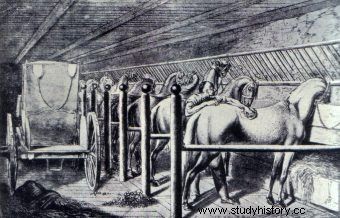
"In the Gdańsk magnate's stable" by Daniel Chodowiecki. Eighteenth-century "garage" of each Sarmatian (source:public domain).
For some magnates, horses were not enough - they reached for camels and even bears. To these extravagances were added luxury vehicles:sleighs and carriages . Jan Sobieski rode a carriage with gilded elements, upholstered inside with velvet - and when he got bored, he ordered in Paris three times more expensive. Because what is not done for the comfort and sense of prestige while traveling?
The long journeys cost hundreds of thousands of zlotys. This was the case with Michał Radziwiłł's diplomatic trip to Austria and Italy in 1674, which he had to partially finance ... by selling out his rich retinue. There was definitely something to get rid of. We know that even the aforementioned Wasyl Konstanty Ostrogski even carried silver and gold-plated bowls and plates with him . And then there were rows, jewels, ornaments…
The Versatile Radziwiłłs
Kulczyk was "everywhere". He founded the Polish Business Council and the Polish-German Chamber of Industry and Commerce. He was active in the field of ecology (Green Cross International) and science (especially in Poznań). He supported peace initiatives (Peres Center for Peace), religious (cooperation with the Pauline Order) and cultural initiatives (Museum of the History of Polish Jews). He also established the Council of Polish Investors in Africa, seeing a lot of room for development on this continent.
But he is not the first Polish rich man interested in the Dark Continent. Mikołaj Krzysztof Radziwiłł, known as the Orphan, has already visited Africa (1549–1616). During an expensive and demanding trip to the Holy Land (1582–1584), he touched Egypt. In an hour and a half he climbed to the top of the Cheops pyramid, complained about the Sphinx, admired the hieroglyphs and watched the mummies ....
Well, the Radziwiłłs were also "everywhere". This magnate family, known already in the 15th century, was very versatile. For several hundred years he was one of the most influential in the Polish-Lithuanian state, giving him hetmans, chancellors, bishops ...They were downright unsinkable although in an atmosphere of scandal they led to the marriage of Barbara Radziwiłł with King Zygmunt August, in Lithuania they discouraged the Sapieha and Pacs, and during the Swedish Deluge, Janusz and Bogusław Radziwiłł were hailed as traitors.
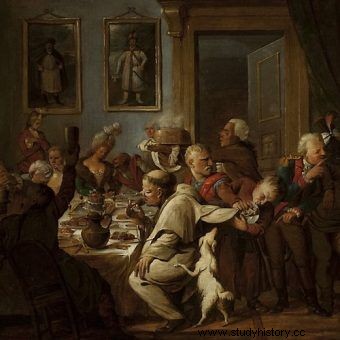
"A feast at the Radziwiłłów" by Artur Orłowski. An example of how the elite had fun in the 18th century (source:public domain).
At the same time, they were considered patrons of art, science, and humanistic thought. They were also flexible enough to adapt to changing conditions:some of the family favored Orthodoxy, some of them professed Calvinism, and others became Catholics.
The army of not only Wiśniowiecki
Kulczyk certainly had an influence on Polish politics. But is it as big as conspiracy theorists would like? Yes, the parliamentary investigative committee indicated that it could have had an excessive influence on the operation of PKN Orlen. Yes, he spoke to the infamous Vladimir Alganov, a former KGB resident. It has also been speculated that during the times of the People's Republic of Poland, Kulczyk's father must have had some connections with the "services" in order to be able to function in business calmly.
But how can it be compared to the Wiśniowiecki family, who got their own representative on the Polish throne ? And this is Michał Korybut, a nobleman who had virtually no merit! Except for the famous father.
Yes, Jeremi was deserving and powerful. There are legends that he had constantly under arms twelve hundred soldiers . According to historians, this is an exaggeration, because the equally well-regarded Władysław Dominik Zasławski-Ostrogski had one hundred and fifty of them (pedestrians, dragoons, Tatars). And that cost 25,000 Polish zlotys a year. With eight times as many soldiers, Wiśniowiecki would have to pay 200,000, which would be a large part (at least a third) of his budget.
Nevertheless, the estates of the Wiśniowiecki family in Podolia covered an area inhabited by almost a quarter of a million subjects, and once the Wiśniowiecka voivode boasted a decorative crown worth, a trifle, 800,000 Polish zlotys . So the magnates could afford a show of strength.
Janusz Ostrogski, richer in his time than the king himself, was able to raise a private army of 20,000 soldiers, which was several times more than the quartered army - permanent units, paid for from royal property.
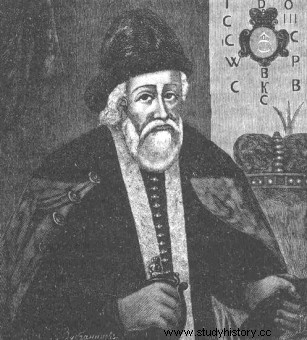
Janusz Ostrogski, one of the richest Polish magnates. Who said only kings rule countries? (source:public domain).
In general, weapons and the army were the favorite toys of magnates. Jan Sobieski, while still a hetman, boasted, among other things, a "gold-framed saber, planted with rubies, with a jasper hilt" received from the king, a Turkish saber with an ivory hilt or gold studded pistols . Not to mention the bronze cannons kept in the family castle in Żółkiew, deterring enemies.
The weapon could always be useful to magnates - not only in defense of the country, but also to protect their property from the creditor (and they had a lot of debts) or ... quickly take the property of a deceased relative.
Wart Pac palace?
Perhaps Kulczyk will be remembered as the owner of the palace complex in Lubniewice or the Chateau de Madrit on the Cote d'Azur. But for the average Pole, the historical memento of him will be (despite the change of ownership) the Old Brewery in Poznań with works of art, including sculptures by Igor Mitoraj.
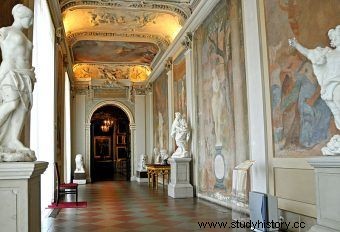
The interior of the Wilanów Palace. Even Jan Kulczyk himself could not boast of such luxuries! (Photo by Dennis Jarvis, license CC BY-SA 2.0).
But it is still not the palace in Wilanów! This is not one of the magnate castles, such as the Krasicki and Sapieha in Krasiczyn, Potocki and Lubomirski in Łańcut or the Radziwiłł and Pac in Warsaw. The latter building houses the Ministry of Health today, but ... it is also associated with the saying "Wart Pac palace, and Pac's palace", as well as the ruined family seat in Dowspuda.
Where does this malice come from? Because Poles don't like the rich ? Or maybe the Pacs and others should, after all, forgive themselves marble mangers ...? The richest Pole in recent years can at least speak of happiness that no malicious saying stuck to him.
And something else connected Kulczyk with the magnate past. His daughter Dominika married Jan Lubomirski-Lanckoroński. A family not just any:in the 18th century, Stanisław Lubomirski was considered one of the richest magnates, leaving behind a fortune estimated at that time at almost two million Polish zlotys.
***
Despite the enormous wealth of the Sobieski family, they needed additional funds to carry out a coup d'état in Poland. Marysieńka had to use all female strengths to obtain the necessary funds. An extraordinary novel by Robert Forys, "Hetman's Gambit" is the story of women who want power above all else. They are ready to pay for it with gold, blood, poison, and even - with their own body.
